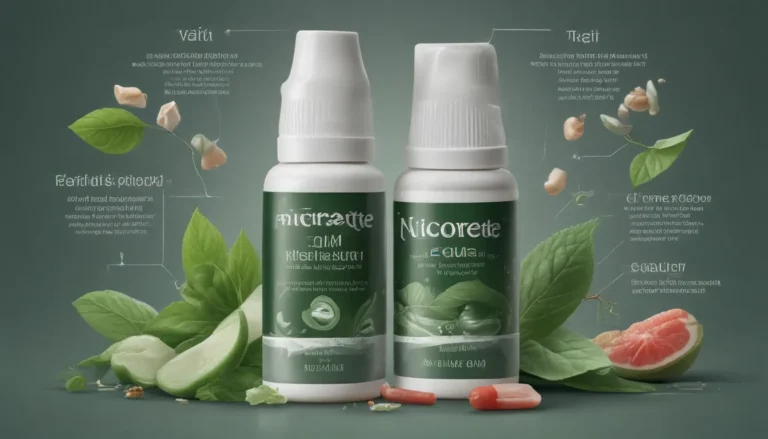The pictures in our articles might not always show exactly what the text is talking about. We use these images to make the article more interesting and eye-catching. They are there to add to the text, but not to replace it or show every detail.
Candy canes are a delightful treat that brings joy and merriment, especially during the festive holiday season. While these iconic peppermint-flavored sweets are undeniably delicious, it's essential to understand their nutritional value and how they can impact your health. In this article, we will delve into 18 candy cane nutrition facts, shedding light on their ingredients, calorie content, and potential benefits and drawbacks. Let's explore the world of candy canes and uncover the secrets behind these sweet treats!
Facts About Candy Cane Nutrition
1. Calorie Content
Candy canes are relatively low in calories compared to other sugary snacks. An average candy cane weighing approximately 28 grams contains around 60 calories. However, it's important to note that larger or flavored candy canes may have a slightly higher calorie count.
2. Sugar Rush
The primary ingredient in candy canes is sugar, giving them their signature sweet taste. On average, a candy cane contains about 14 grams of sugar. Consuming excessive amounts of candy canes can lead to a higher intake of added sugars in your diet.
3. Fat-Free Delight
For those mindful of their fat intake, candy canes are a guilt-free treat as they are completely fat-free. This makes them a suitable choice for individuals looking for a sweet indulgence without the added fat content.
4. Limited Protein and Fiber
While candy canes are a tasty treat, they do not provide significant amounts of protein or dietary fiber. An average candy cane contains less than 1 gram of protein and minimal fiber content. It's essential to incorporate other nutrient-rich foods into your diet to meet your daily protein and fiber requirements.
5. Sodium Content
Candy canes typically have a minimal sodium content, with an average single candy cane containing about 10 milligrams of sodium. This makes them a suitable choice for individuals monitoring their sodium intake due to health reasons.
6. Vitamin and Mineral Profile
In terms of vitamins and minerals, candy canes do not offer significant amounts. While some brands may fortify their candy canes with small amounts of vitamins like vitamin C, these additions are usually not substantial enough to impact your overall nutrient intake significantly.
Flavorful Varieties and Allergen Considerations
7. Festive Flavors
While traditional peppermint-flavored candy canes are the most popular, there is a wide variety of flavors to suit every palate. From fruity options like cherry and strawberry to unique combinations like chocolate mint, the choices are endless. Keep in mind that flavored candy canes may have slightly different nutritional profiles.
8. Allergen Considerations
Candy canes are generally free from common allergens such as nuts, wheat, and soy. However, it's crucial to check the ingredient list and packaging for any potential allergens that may be present in specific brands or variations of candy canes.
The Joy of Candy Canes: More Than Just a Sweet Treat
9. Portion Control
Due to their smaller size, candy canes can aid in portion control for those with a sweet tooth. Instead of indulging in a large candy bar or a bag of sweets, enjoying a single candy cane can satisfy your craving without consuming excess calories.
10. Oral Health Impact
One potential downside of candy canes is their impact on oral health. The high sugar content in candy canes can contribute to tooth decay and cavities, especially if proper oral hygiene practices are not followed. Remember to brush your teeth or rinse your mouth with water after enjoying a candy cane to reduce the risk of dental issues.
11. Moderation is Key
Like any sweet treat, moderation is crucial when consuming candy canes. While they can be a part of a balanced diet, excessive consumption can lead to a higher intake of added sugars, which can have adverse effects on your overall health.
Creative Uses and Beyond the Holidays
12. Sharing the Joy
Candy canes have a long-standing tradition of being shared and exchanged during the holiday season. They symbolize goodwill and can be a delightful way to spread joy and cheer among friends, family, and loved ones.
13. Baking and Decorating
In addition to being enjoyed on their own, candy canes are a popular ingredient in various baked goods and desserts. They can be crushed and sprinkled on cupcakes, used as a decoration for gingerbread houses, or melted down to create flavorful glazes for cookies and cakes.
14. Candy Cane Hot Chocolate
One delightful way to incorporate candy canes into your holiday beverages is by making candy cane hot chocolate. Simply crush a candy cane and stir it into your hot chocolate for a minty and festive twist. It adds a pleasant flavor and a visually appealing touch to your drink.
15. Candy Canes as Stirrers
Another creative use for candy canes is using them as stirrers for your favorite warm beverages. Place a candy cane in your coffee, hot chocolate, or warm apple cider, and watch as it slowly melts and infuses your drink with a hint of minty sweetness.
16. DIY Crafts
Candy canes can be a fantastic addition to your holiday DIY crafts. Use them to create wreaths, tree ornaments, or incorporate them into handmade holiday cards. Let your creativity shine and explore the endless possibilities of crafting with candy canes.
17. Candy Canes and Hot Pockets
Surprisingly, candy canes can be transformed into adorable and delicious hot pockets. By using puff pastry, chocolate, and crushed candy canes, you can create a delightful treat that combines the flaky goodness of pastry with the sweetness of candy canes. They make for a perfect homemade gift or a delightful indulgence.
18. Candy Canes Beyond the Holidays
While candy canes are often associated with the holiday season, their enjoyment doesn't have to be limited to that time of the year. Incorporate them into your celebrations and special occasions throughout the year, or simply indulge in them whenever you're in the mood for a nostalgic and sweet treat.
In Conclusion
Candy canes add a delightful and festive touch to the holiday season. To enjoy them responsibly, it's essential to consume them in moderation and be mindful of their nutritional content. By understanding these 18 candy cane nutrition facts, you can make informed choices about incorporating them into your diet while maintaining a balanced and healthy lifestyle.
FAQs: Answering Your Candy Cane Questions
1. Are candy canes gluten-free?
Some candy canes are gluten-free, but it's critical to check the packaging and ingredient list for potential gluten-containing additives or cross-contamination during the manufacturing process. Opting for candy canes labeled as gluten-free ensures they meet the dietary requirements of individuals with gluten sensitivity or celiac disease.
2. Can candy canes be stored for an extended period?
Candy canes have a relatively long shelf life if stored properly. To maintain their freshness, store them in a cool, dry place away from direct sunlight and moisture. Sealing them in an airtight container or wrapping them in plastic wrap can also help prevent them from becoming sticky or absorbing unwanted odors.
3. Can I find sugar-free candy canes?
Yes, sugar-free candy canes sweetened with sugar substitutes like xylitol or sucralose are available in the market. It's important to consume sugar-free candies in moderation and be aware of their potential laxative effect if consumed excessively.
4. Are candy canes vegan-friendly?
Traditional candy canes are typically vegan-friendly as they do not contain animal-derived ingredients. However, some flavored or specialty candy canes may use animal-derived additives or food coloring. Checking the ingredient list or opting for vegan-certified candy canes ensures they align with a vegan lifestyle.
5. Can individuals with diabetes enjoy candy canes?
Individuals with diabetes can consume candy canes in moderation as part of a well-managed diet plan. It's crucial to consider the carbohydrate content and factor it into their overall carbohydrate intake for the day. Consulting with a healthcare professional or a registered dietitian can offer personalized guidance on incorporating candy canes into a diabetes-friendly diet.
Enjoy the sweet delights of candy canes with these nutrition facts in mind and continue spreading joy and cheer with this beloved holiday treat.






